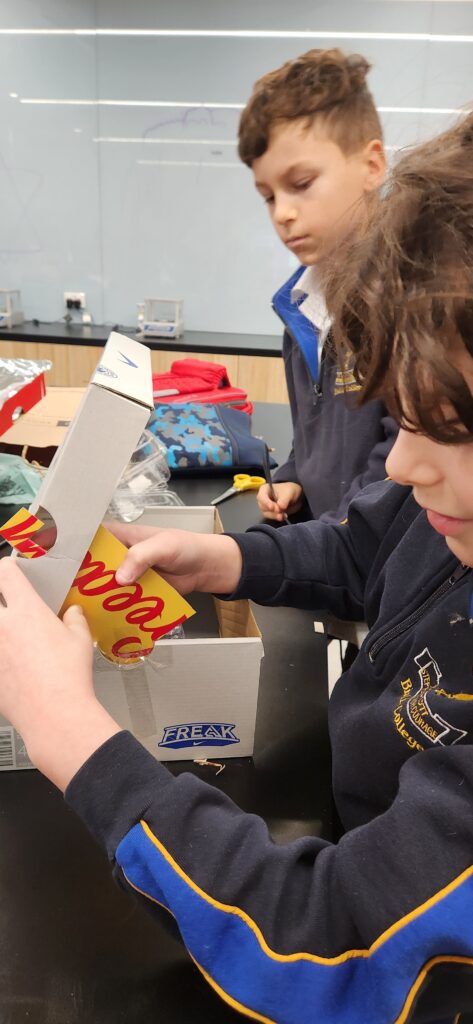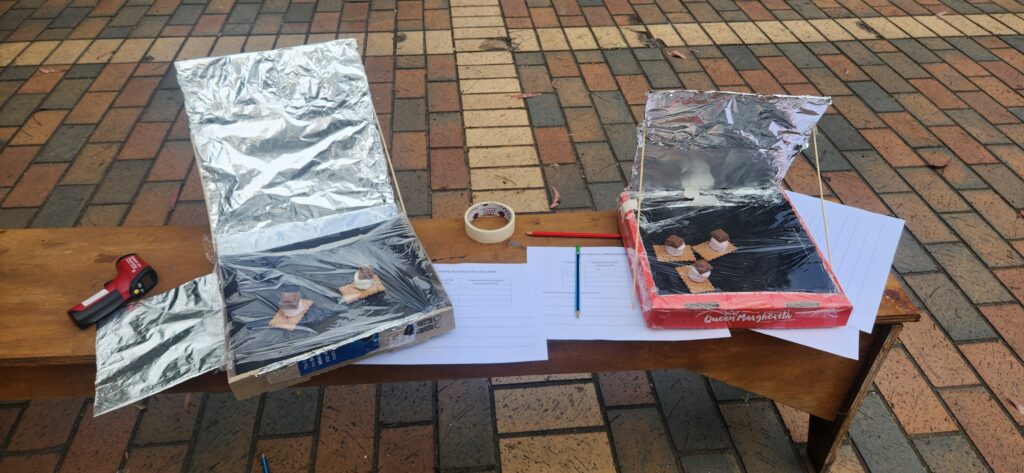As part of our science learning, students recently designed and built their own solar cookers, exploring concepts such as solar energy, materials science, and changes in states of matter. This hands-on project encouraged them to think about how renewable energy can be harnessed to solve real-world problems, especially in communities with limited access to conventional cooking fuels.
To spark curiosity, students watched a video showing bread being baked in a solar oven. This led to thoughtful discussion about how small changes in technology, like solar cooking, can create big impacts on people’s lives and the environment.
The design challenge — “Can you harness the sun’s energy to melt a s’more?” — immediately captured their excitement. Working in teams, students used cardboard boxes, foil, and plastic to create solar cookers, carefully applying their knowledge of heat transfer and reflection. They eagerly tested and adjusted their designs, hoping to see their chocolate melt within the 30-minute timeframe.
Throughout the activity, students showed high levels of collaboration, problem solving, and creativity. The STEM design process guided their thinking, reminding them that improvement and reflection are just as important as the final product.
By the end of the session, students confidently explained how different materials affect heat capture and proudly shared their working solar cookers. Their engagement, enthusiasm, and enjoyment were clear, making this a memorable and meaningful learning experience.


